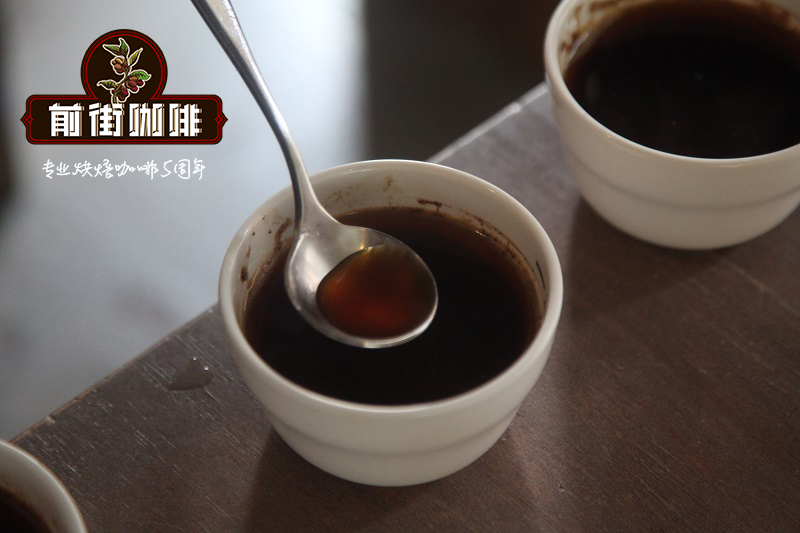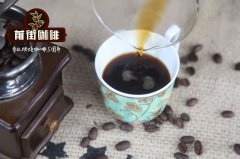Introduction of coffee grading system in Tanzania Analysis of straight brewing methods of coffee brewing

Professional coffee knowledge exchange more coffee bean information please follow the coffee workshop (Wechat official account cafe_style)
Qianjie-Tanzanian coffee, commonly used brewing methods to share
Tanzania covers an area of 945087 square kilometers, of which Zanzibar is 2657 square kilometers. It consists of the mainland, Zanzibar and more than 20 small islands. Located in eastern Africa and south of the equator, the continent is bounded by the Indian Ocean to the east, Zambia, Malawi and Mozambique to the south, Rwanda, Burundi and the Democratic Republic of the Congo to the west, and Kenya and Uganda to the north. The coastline of the mainland is 840 kilometers long. The topography of Tanzania is high in the northwest and low in the southeast, showing a ladder shape. The eastern coast is a lowland, the western inland plateau accounts for more than half of the total inland area, and the East African Rift Valley runs from east to west from Lake Malawi to the north and south. The Kibo peak of Mount Kilimanjaro in the northeast is 5895 meters above sea level, which is the highest peak in Africa.
The grading of raw coffee beans in Tanzania is first rated according to the altitude of the coffee producing areas, the quality of raw coffee beans in the same higher altitude areas is higher, and then the final grading is carried out according to the number of raw coffee beans at the same altitude. In general, Tanzania is named after AA, A, B, etc.
AA level: 18 items account for at least 90% of the total, 17 items account for 8-10%, and 15 items account for 2% at most. Class A: 15ram 6 items account for at least 90% of the total; 14 items account for up to 2%.
Class B: 15thumb 6 items account for at least 90% of the whole. Class C: 14 mesh accounts for at least 90% of the total; 13 mesh up to 10%. PB: 14 items account for at least 90% of the total; floating beans up to 5%.
AF class: 17 items account for at least 90% of the total; 15 ppm 6 mesh at most 8-10%; 14 mesh at most 2%. TT grade: 15ram 6 items account for at least 90% of the whole, 14 items up to 10%.
Class E: 18 mesh accounts for at least 90% of the total; a maximum of 10% is allowed to be less than 18 mesh, but not less than 15 mesh.
Qianjie usually uses the segmented method to brew coffee, because the segmented method helps to distribute the water evenly, is conducive to the adjustment of the amount of water brewed in each section, and avoids excessive water and light taste caused by improper brewing.
Advantages: it is richer than the one-knife flow, and can clarify the flavor of the front, middle and back of the coffee. The practice is to increase the amount of water each time after steaming, usually when the coffee liquid is about to drop to the surface of the powder layer, and use small, medium and large water flow to do three-stage extraction.
Disadvantages: there will be relatively high requirements for the flow rate and flow rate of water.
After steaming, only one continuous injection of water is done, which is suitable for medium-roasted or deep-roasted coffee beans.
Advantages: maintain a peaceful flavor and a sense of balance.
Disadvantages: because the water injection technique is not well controlled, the water in the upper position without coffee powder falls through the edge of the filter paper, so that the coffee may be mixed with water smell.
Knowledge expansion: extraction by stages: after steaming, a section of water is injected into several stages, which is suitable for light-roasted, medium-and medium-roasted coffee beans.
END
Important Notice :
前街咖啡 FrontStreet Coffee has moved to new addredd:
FrontStreet Coffee Address: 315,Donghua East Road,GuangZhou
Tel:020 38364473
- Prev

A brief introduction to the grading system of coffee beans in Tanzania what are the brewing methods of sharing coffee
Professional coffee knowledge exchange more coffee bean information please follow the coffee workshop (Wechat official account cafe_style) front street-Tanzanian coffee, commonly used brewing methods to share grading-Tanzania's grading method is the same as Kenya, is according to bean particle size and flavor grading. The order of particle size is as follows: the quality (flavor, taste) of AA Plus (AA+) cup is very good.
- Next

Brazilian Santa Lucia Manor Coffee drink correctly the flavor of Brazilian Santa Lucia Manor Coffee
Professional coffee knowledge exchange more information about coffee beans please follow the coffee workshop (Wechat official account cafe_style) Fazengda Saint Lucia is managed by Hercio Carneiro. He started making coffee when he was a teenager, and he was part of the Kamod Minas campaign to research and promote high-quality coffee. Helcio, who won the sixth place in the 2016 Excellence Cup (COE) project, with his yellow
Related
- Beginners will see the "Coffee pull flower" guide!
- What is the difference between ice blog purified milk and ordinary milk coffee?
- Why is the Philippines the largest producer of crops in Liberia?
- For coffee extraction, should the fine powder be retained?
- How does extracted espresso fill pressed powder? How much strength does it take to press the powder?
- How to make jasmine cold extract coffee? Is the jasmine + latte good?
- Will this little toy really make the coffee taste better? How does Lily Drip affect coffee extraction?
- Will the action of slapping the filter cup also affect coffee extraction?
- What's the difference between powder-to-water ratio and powder-to-liquid ratio?
- What is the Ethiopian local species? What does it have to do with Heirloom native species?

